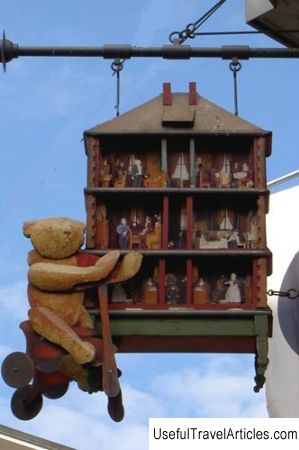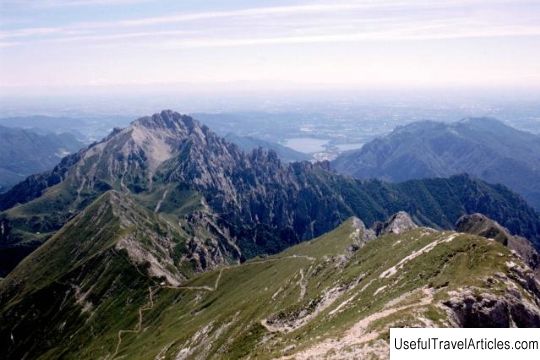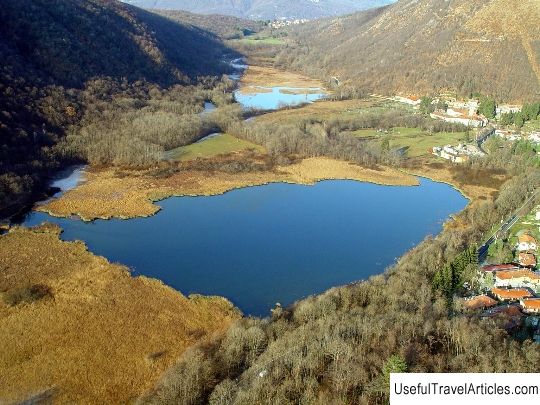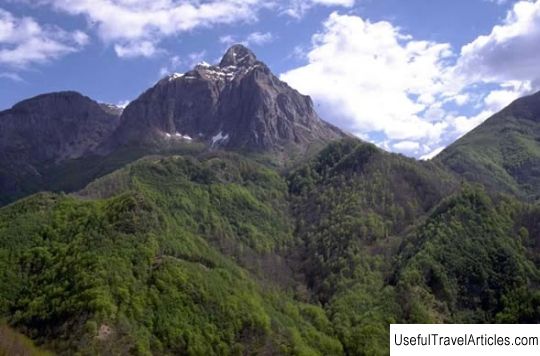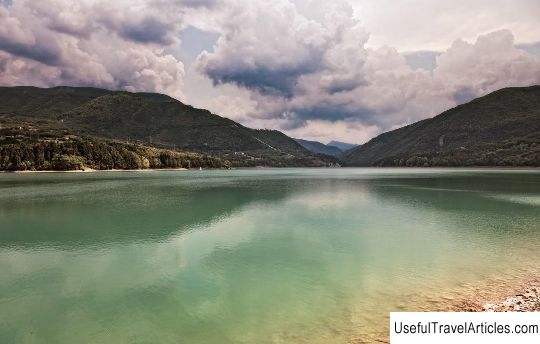Natural Park Matese (Parco regionale del Matese) description and photos - Italy: Caserta
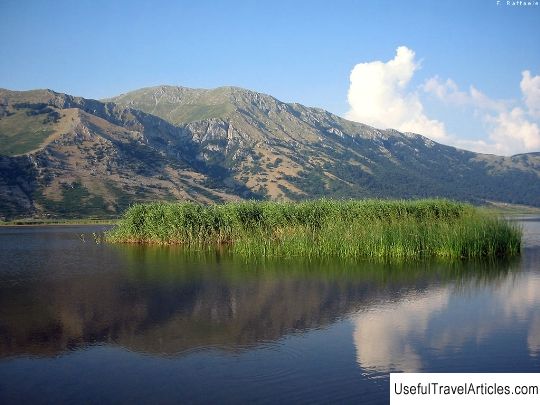
Natural Park of Matese (Parco regionale del Matese) description and photos - Italy: Caserta. Detailed information about the attraction. Description, photographs and a map showing the nearest significant objects. The title in English is Parco regionale del Matese. Photo and descriptionThe Matese Natural Park in the province of Caserta was founded in 2002 to protect one of the largest and most important limestone and dolomite mountain ranges in the region. It spreads over an area of 33 thousand hectares and is considered one of the most interesting areas of the central Apennines in terms of the richness of ecosystems. Most of the park is occupied by a limestone mountain range stretching between Molise and Campania. This area, inhabited by wolves and golden eagles, is notable for amazing landscapes with blue lakes, which reflect mountain peaks, well-preserved old villages and towns, historical and cultural monuments left by the ancient Romans and Samnites. The main peaks of the park are the Miletto, Gallinola and Mutria mountains. From Miletto (2050 m) a wonderful view opens up of the lakes below, most of Campania and Molise, the peaks of Gran Sasso in the north and the Tyrrhenian and Adriatic seas. Mount Gallinola (1923 m) is notable for its plateaus Campolongo, Piselonne and Camerelle. The entire territory of the Matese Park is unique from a naturalistic point of view. The eastern, highest slopes of the mountains are covered with beech forest, down the slopes there is a mixed forest, consisting of chestnuts and holly groves, and the sunniest areas are occupied by Mediterranean shrubs. Blooming wild orchids can be found in the undergrowth, and rare and endemic species such as auricula, saxifrage, edryanthus grass-leaved and mullein grow on rocky cliffs. The cypress grove in the municipality of Fontegrec deserves special attention - the trees here reach an age of 500 years and a height of 30 meters! On the territory of the grove you can find ponds with crystal clear water, created by the flow of the Sava river. Of the wild animals in the Matese Park, there are wolves and wild cats, and the feathered kingdom is represented by hawks, sparrowhawks, buzzards and other birds of prey. The abundance of water resources attracts many aquatic bird species here, such as herons, white storks, reed harriers, turukhtans and ducks. Three large lakes - Matese, Gallo and Letino - are located in a valley that is considered one of the most beautiful in the Apennines. Matese is the highest mountainous karst lake in Italy. Lakes Letino and Gallo were created during the construction of a dam on the rivers Lethe and Sava and are still used to obtain hydropower. Above the dam of Lake Letino, at a distance of 89 meters from each other, there are two caves of incredible beauty with stalactites and stalagmites and small waterfalls. Special attention should be paid to the Le Mortine ecosystem, taken under the protection of WWF: cormorants use its forests for spending the night, and about a thousand coots live here all the time. Finally, Matese is also a territory of important historical and cultural heritage, with traditions and legends that have been an integral part of the life of the local population since ancient times. The fossil remains of more than 20 species of sea and river fish, amphibians, the ancestor of modern salamanders, two crocodiles and even a baby dinosaur known as Chiro have been preserved on the territory of the Pietraroja paleontological zone. Scientists estimate the age of these remains at 113 million years. You can see the fossils in a small museum in the town of Cuzano Mutri. Ancient castles, fortress walls, towers, fortified buildings and churches are scattered throughout the park. It is worth paying special attention to the Castello Prata castle with angular cylindrical towers, built in the 12th century - it is perfectly preserved. You can get acquainted with the sights of the entire park by going on a hike along one of the many trails. The longest trail in the world, Sentiero Italy, is very popular among tourists. It starts in the town of Gioia Sannitica and goes up to Monte Crocelle on the border with the Molise region. It starts in the town of Gioia Sannitica and goes up to Monte Crocelle on the border with the Molise region. It starts in the town of Gioia Sannitica and goes up to Monte Crocelle on the border with the Molise region.       We also recommend reading Church of St. Florentin (Eglise Saint-Florentin) description and photos - France: Amboise Topic: Natural Park Matese (Parco regionale del Matese) description and photos - Italy: Caserta. |
